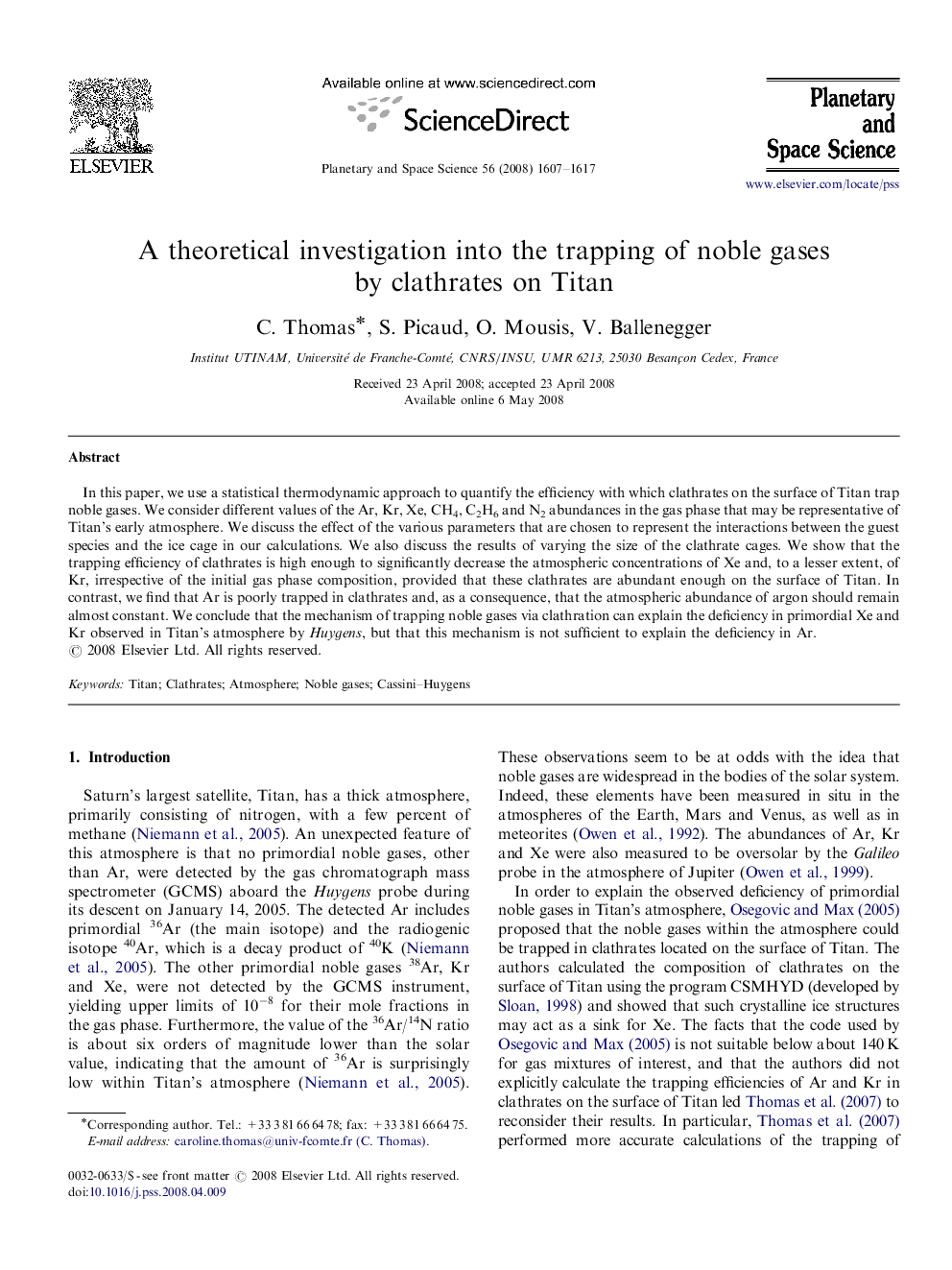| Article ID | Journal | Published Year | Pages | File Type |
|---|---|---|---|---|
| 1782030 | Planetary and Space Science | 2008 | 11 Pages |
In this paper, we use a statistical thermodynamic approach to quantify the efficiency with which clathrates on the surface of Titan trap noble gases. We consider different values of the Ar, Kr, Xe, CH4, C2H6 and N2 abundances in the gas phase that may be representative of Titan's early atmosphere. We discuss the effect of the various parameters that are chosen to represent the interactions between the guest species and the ice cage in our calculations. We also discuss the results of varying the size of the clathrate cages. We show that the trapping efficiency of clathrates is high enough to significantly decrease the atmospheric concentrations of Xe and, to a lesser extent, of Kr, irrespective of the initial gas phase composition, provided that these clathrates are abundant enough on the surface of Titan. In contrast, we find that Ar is poorly trapped in clathrates and, as a consequence, that the atmospheric abundance of argon should remain almost constant. We conclude that the mechanism of trapping noble gases via clathration can explain the deficiency in primordial Xe and Kr observed in Titan's atmosphere by Huygens, but that this mechanism is not sufficient to explain the deficiency in Ar.
